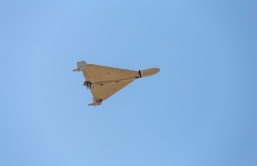With thousands of asteroids and comets orbiting the sun in the same cosmic region as Earth, it's no surprise that every now and then, some of them come closer to our planet than usual. In order to ensure that we have the ability to counter any of these near-Earth objects if they come too close, NASA's Planetary Defense Coordination Officer Lindley Johnson works with Near Earth Object Observation Program Manager Kelly Fast to keep track of them and come up with ideas to deflect them.
"NASA has been in this business of finding near-Earth objects, asteroids and comets for a little over 15 years now," Johnson said. "In fact, in the last couple of days we've had objects ... 20 to 30 meters that have come ... as close as the Moon to the Earth."
About three or four times a year, the team detects objects that come within the geo-synchronous belt of satellites, which prompts them to alert the Space Surveillance Network. But even in these situations, the chances of an NEO hitting a satellite, let alone Earth, is not very likely.
"Of our current catalog of almost 14,000 near-Earth objects now, I think the highest probability of impact we have is for an object out in [the year] 2185 and it's like a one in 490 chance of impacting the Earth," Johnson said.
Despite this low risk and with almost 14,000 near-Earth objects mapped, NASA's Planetary Defense Office still doesn't have the ability to predict all of them. For example, nobody saw the 2013 meteorite that hit Russia coming.
"Most of our survey telescopes are ground-based and so therefore they can only observe at night, and this object came in the daytime out of the sun," Johnson said. "But it was also a very small object only a little less than 20 meters in size and our systems really aren't capable of finding objects that small very far out in space. ... At best we might see one, you know, coming inbound from the nightside maybe only a day or two before the impact."
When it comes to larger asteroids, NASA has a plan to deflect them should they ever pose a danger to the Earth, and it involves a kinetic impactor.
"NASA would launch the kinetic impactor to demonstrate the kinetic impactor technique and deflect actually a moon of a small asteroid off its orbit," Johnson said. "What you need to do ... is just change its velocity by a slight amount and if you do that enough years in advance you only have to change that velocity by a few millimeters per second. And so you just slam a kinetic impactor into it at the right velocity vector and that will impart the energy to either speed it up or slow it down, depending on which way you want to move it enough so that a hit becomes a miss."
In addition to NASA, the European Space Agency (ESA) is also in the field of NEOs and hopes to coordinate with NASA in order to devise preventative measures that can successfully keep NEOs from posing a danger to our planet.
"We look forward to working with the new Planetary Defense Coordination Office, building on long-standing international and inter-agency cooperation in the domain of NEO detection, risk assessment and mitigation," Gerhard Drolshagen of the ESA said.








